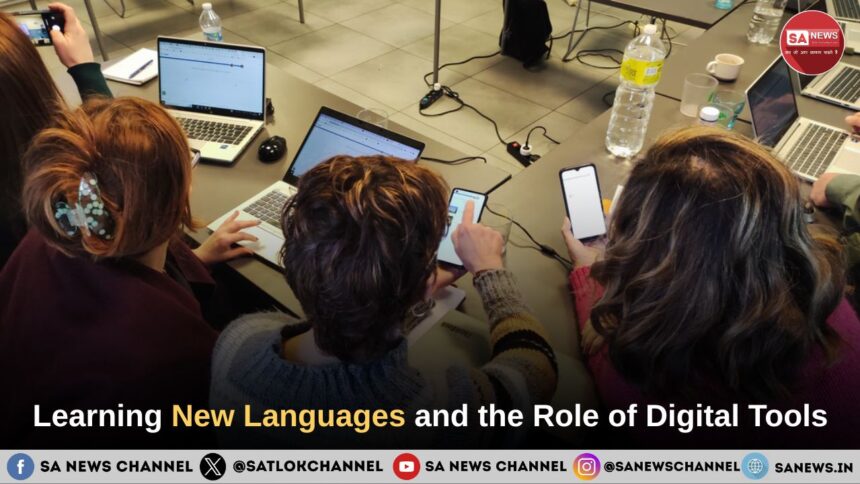Learning New Languages: In today’s world, communication is the key to success. Learning a new language helps people connect with others, understand new cultures, and grow personally and professionally. In the past, language learning was limited to classrooms, textbooks, and teachers. But now, with the help of digital tools and technology, learning languages has become easier, faster, and more enjoyable.
Importance of Learning New Languages
Language is the bridge that connects people. Learning a new language is not just about speaking differently it is about seeing the world from another point of view. It helps us understand new cultures, traditions, and ways of thinking.
It also improves our memory, focus, and problem-solving skills. People who know more than one language can communicate easily in global workplaces and travel comfortably to different countries. Students can access international education, and professionals can build better careers. In short, knowing more than one language opens the door to the world.
Traditional vs. Modern Methods of Learning
Earlier, learning a new language meant joining classes, reading books, and doing written exercises. These methods were helpful but sometimes slow and boring. With the arrival of digital tools, everything changed. Today, anyone can learn a new language from home using a mobile phone or a computer. There is no need to depend only on teachers or physical classrooms. The learning process has become flexible and more suited to individual needs.
Role of Digital Tools in Language Learning
Digital tools have completely changed the way we learn languages. Apps like Duolingo, Babbel, Memrise, and Rosetta Stone make learning simple and fun. These apps use games, pictures, and quizzes to teach vocabulary and grammar. Learners can listen to correct pronunciation and repeat words until they sound right.
Most of these tools are available 24/7, which means you can study whenever and wherever you want. This flexibility helps busy people like students and working adults continue learning without disturbing their schedule.
Real-Life Practice Through Digital Platforms
One of the biggest advantages of digital tools is the ability to practice with real people. Through apps and websites like HelloTalk, Tandem, or Speaky, learners can chat or talk with native speakers around the world.
Also Read: Passport Seva 2.0: India Launches e-Passports for Faster, Safer Travel
This kind of practice improves speaking and listening skills much faster than studying alone. Video calls, chat rooms, and online discussion groups create a natural learning environment, even if the learner is sitting thousands of miles away.
Personalized and Interactive Learning
Modern digital tools use Artificial Intelligence (AI) to make learning personal. They track the learner’s progress, identify mistakes, and suggest exercises based on weak areas. This personalized method makes learning more effective.
Interactive features like quizzes, voice recognition, and progress charts motivate learners to stay consistent. Instead of memorizing long grammar rules, learners can practice through short lessons, games, and real examples, which keeps them interested.
Conclusion
Learning new languages is one of the best ways to grow as a global citizen. It improves communication, builds confidence, and connects people from different parts of the world. Digital tools have made this journey easier, faster, and more enjoyable.
With the help of online apps, videos, and AI-based platforms, anyone can learn a new language at their own speed and comfort. Technology has truly made the world a smaller place where learning never stops, and every language learned is a new window to understanding humanity.









